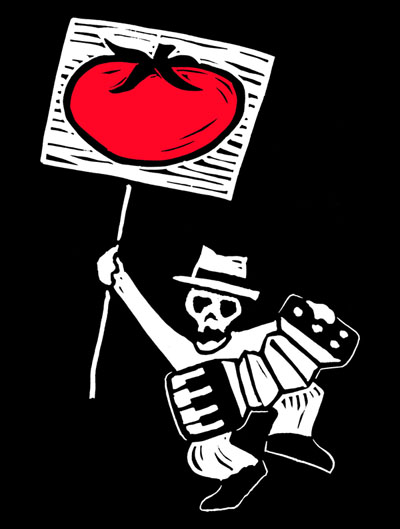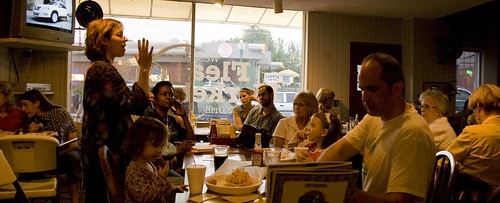Excerpt from the new book
The Big Necessity: The Unmentionable World of Human Waste and Why It Matters,
by Rose George
I need the bathroom. I assume there is one, though I'm at a spartan restaurant in the Ivory Coast, in a small town filled with refugees from next-door Liberia, where water comes in buckets and you can buy towels second-hand. The waiter, a young Liberian man, only nods when I ask. He takes me off into the darkness to a one-room building, switches on the light, and leaves. There's a white tiled floor, white tiled walls, and that's it. No toilet, no hole, no clue. I go outside to find him again and ask whether he's sent me to the right place. He smiles with sarcasm. Refugees don't have much fun, but he's having some now. "Do it on the floor. What do you expect? This isn't America!" I feel foolish. I say I'm happy to use the bushes; it's not that I'm fussy. But he's already gone, laughing into the darkness.
I need the bathroom. I leave the reading room of the British Library in central London and find a "ladies" a few yards away. If I prefer, there's another one on the far side of the same floor, and more on the other six floors. By 6 p.m., after thousands of people have entered and exited the library and the toilets, the stalls are still clean. The doors still lock. There is warm water in the clean sinks. I do what I have to do, then flush the toilet and forget it immediately, because I can, and because all my life I have done no differently.
This is why the Liberian waiter laughed at me. He thought that I thought a toilet was my right, when he knew it was a privilege.
This is why the Liberian waiter laughed at me. He thought that I thought a toilet was my right, when he knew it was a privilege.
It must be, when 2.6 billion people don't have sanitation. I don't mean that they have no toilet in their house and must use a public one with queues and fees. Or that they have an outhouse or a rickety shack that empties into a filthy drain or pigsty. All that counts as sanitation, though not a safe variety. The people who have those are the fortunate ones. But four in ten people have no access to any latrine, toilet, bucket, or box. Nothing. Instead, they defecate by train tracks and in forests. They do it in plastic bags and fling them through the air in narrow slum alleyways. If they are women, they get up at 4 a.m. to be able to do their business under cover of darkness for reasons of modesty, risking rape and snakebites. Four in ten people live in situations in which they are surrounded by human excrement, because it is in the bushes outside the village or in their city yards, left by children outside the back door. It is tramped back in on their feet, carried on fingers onto clothes and into food and drinking water.
The disease toll of this is stunning. Eighty percent of the world's illness is caused by fecal matter. A gram of feces can contain 10 million viruses, 1 million bacteria, 1,000 parasite cysts, and 100 worm eggs. Bacteria can be beneficial: the human body needs bacteria to function, and only 10 percent of cells in our body are actually human. Plenty are not. Small fecal particles can then contaminate water, food, cutlery, and shoes—and be ingested, drunk, or unwittingly eaten. One sanitation specialist has estimated that people who live in areas with inadequate sanitation ingest 10 grams of fecal matter every day.
Diarrhea—usually caused by feces-contaminated food or water—kills a child every fifteen seconds. That means more people dead of diarrhea than all the people killed in conflict since the Second World War. Diarrhea, says the UN children's agency UNICEF, is the largest hurdle a small child in a developing country has to overcome. Larger than AIDS, or TB, or malaria. 2.2 million people—mostly children—die from an affliction that to most westerners is the result of bad takeout. Public health professionals talk about water-related diseases, but that is a euphemism for the truth. These are shit-related diseases.
I'm often asked why I wrote The Big Necessity.
http://www.slate.com/id/2201466/entry/2201467
(No more at "Read More")
Click Here to Read More..












